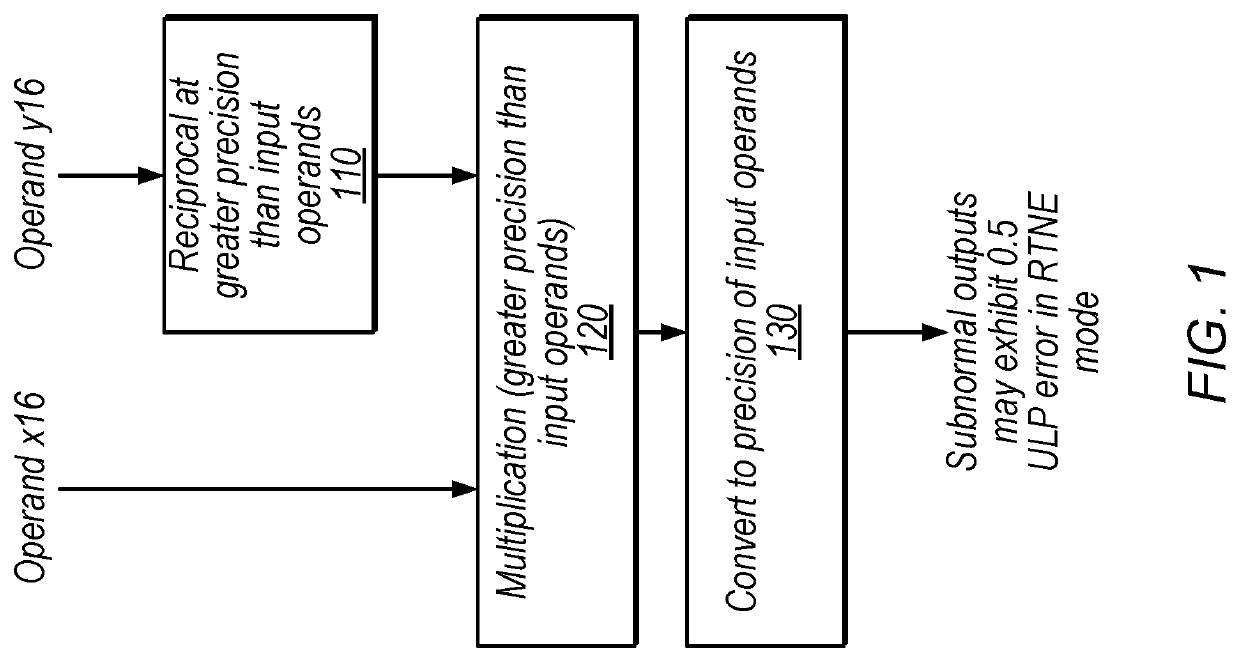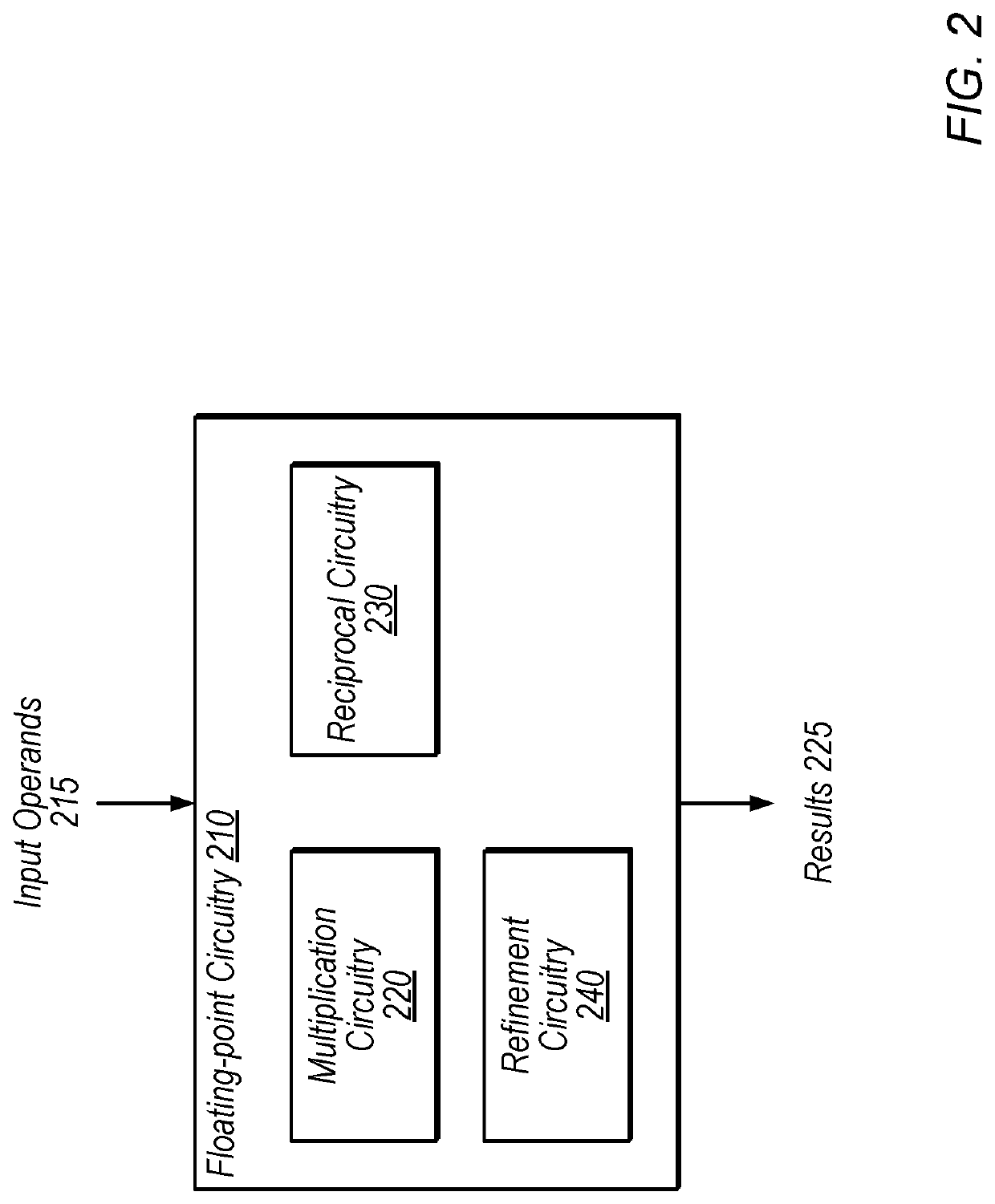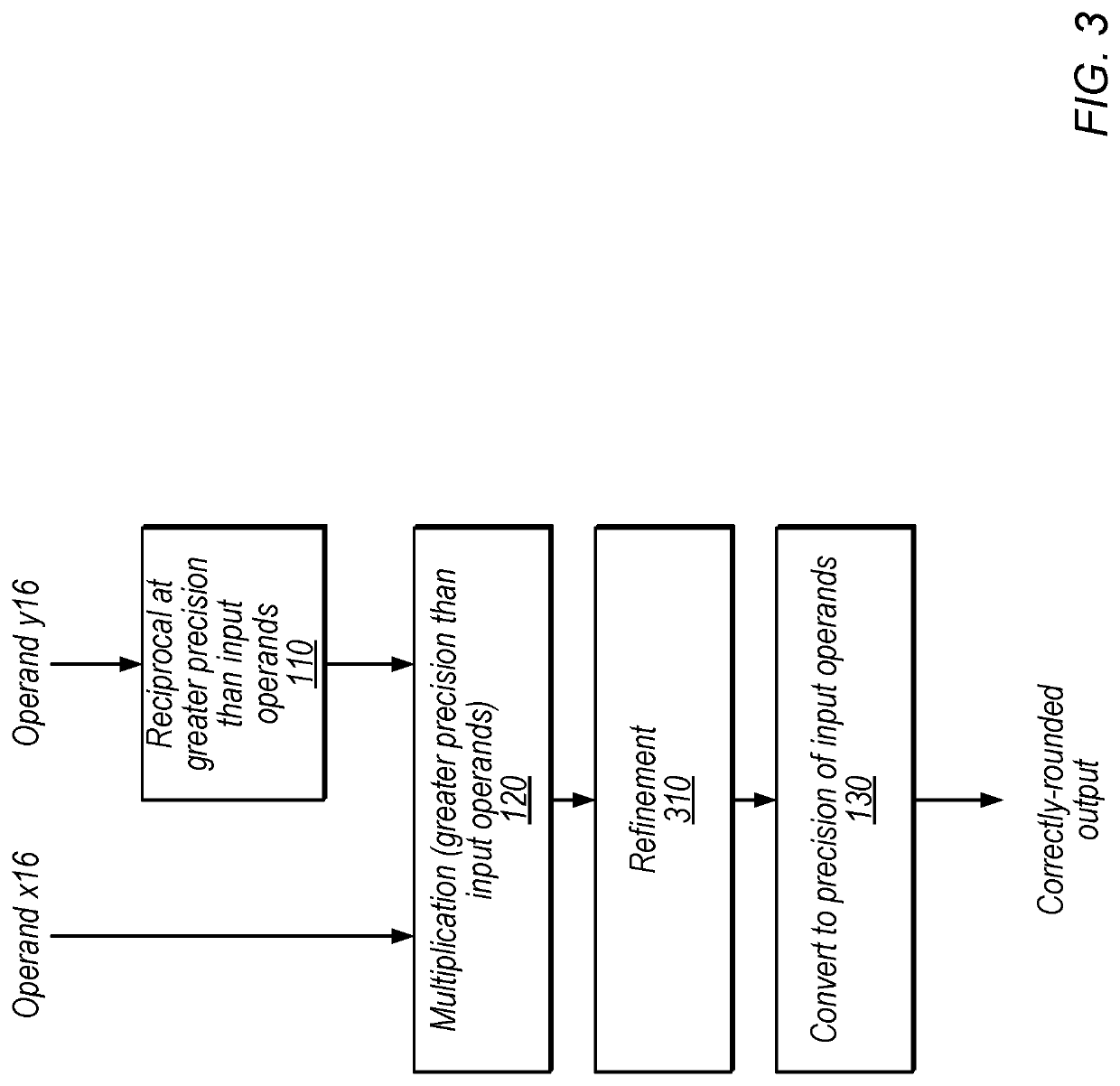Floating-point division alternative techniques
a technology of floating point division and alternative techniques, applied in the field of floating point circuitry, can solve the problems of introducing rounding errors for certain ranges of values, consuming substantial area, power and processing time,
- Summary
- Abstract
- Description
- Claims
- Application Information
AI Technical Summary
Benefits of technology
Problems solved by technology
Method used
Image
Examples
Embodiment Construction
Exemplary Reciprocal Techniques for Floating Point Division
[0014]FIG. 1 is a diagram illustrating an exemplary process for performing floating-point division using a reciprocal function, according to some embodiments. In the illustrated example, x16 is a 16-bit dividend and y16 is a 16-bit divisor. Therefore, the desired output is x16 divided by y16. Note that various precisions (e.g., 16-bit and 32-bit) are discussed herein for purposes of illustration, but these precisions are not intended to limit the scope of the present disclosure. In other embodiments, similar techniques may be used with any of various different appropriate floating-point precisions.
[0015]At 110, in the illustrated embodiment, floating-point circuitry determines the reciprocal of y16 at a greater precision than the input operands (at a 32-bit precision for this example). In some embodiments, the output of this operation is 1 / y16, at a greater precision than used to represent y16. For example, this operation ma...
PUM
 Login to View More
Login to View More Abstract
Description
Claims
Application Information
 Login to View More
Login to View More - R&D
- Intellectual Property
- Life Sciences
- Materials
- Tech Scout
- Unparalleled Data Quality
- Higher Quality Content
- 60% Fewer Hallucinations
Browse by: Latest US Patents, China's latest patents, Technical Efficacy Thesaurus, Application Domain, Technology Topic, Popular Technical Reports.
© 2025 PatSnap. All rights reserved.Legal|Privacy policy|Modern Slavery Act Transparency Statement|Sitemap|About US| Contact US: help@patsnap.com



